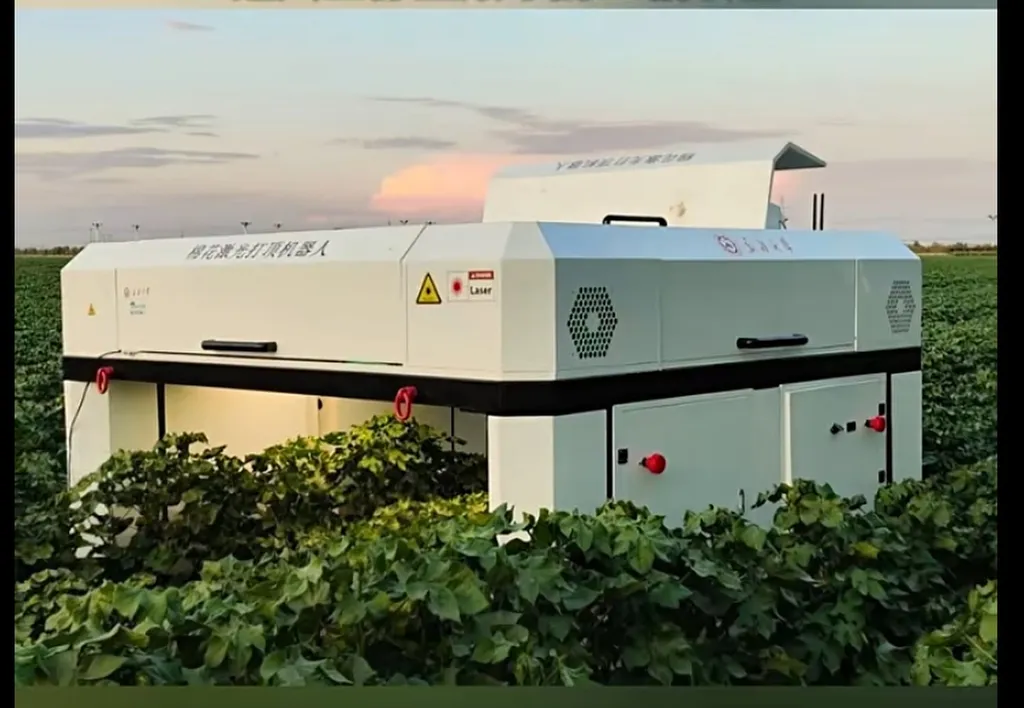In the heart of Xinjiang, China, researchers are revolutionizing how we monitor crop health, and their findings could have significant implications for the energy sector. Chunbo Jiang, a scientist from the College of Resources and Environment at Xinjiang Agricultural University, has led a study that introduces a phenology-aware machine learning framework for estimating leaf chlorophyll content (LCC) in cotton using hyperspectral reflectance. This research, published in the journal *Remote Sensing* (translated as *Remote Sensing* in English), offers a promising approach to precision agriculture that could enhance crop management and, consequently, bioenergy production.
The study focuses on the critical task of accurately and non-destructively monitoring LCC, which is essential for assessing crop photosynthetic activity and nitrogen status. By combining hyperspectral reflectance data with various regression models, Jiang and his team have developed a method that could transform how farmers and agronomists approach crop health assessment.
“Our framework leverages the power of machine learning to provide stage-specific monitoring of chlorophyll dynamics,” Jiang explained. “This means we can offer more precise and timely insights into crop health, which is crucial for optimizing agricultural practices.”
The research involved field experiments that synchronized spectral and SPAD measurements at six key reproductive stages of cotton. The team evaluated several spectral transformations, including vegetation indices (VIs), first-order derivatives, and trilateration edge parameters (TEPs), a new set of geometric metrics for red-edge characterization. Five regression approaches were tested, including univariate and multivariate linear models, as well as machine learning algorithms like Random Forest, K-Nearest Neighbor, and Support Vector Regression.
The results were impressive. Random Forest consistently outperformed the other models, achieving the highest R² value of 0.85 and the lowest RMSE of 4.1 during the bud stage. Notably, the optimal prediction accuracy was achieved with fewer than five spectral features, demonstrating the efficiency of the proposed framework.
So, what does this mean for the energy sector? Cotton is not just a textile crop; it is also a potential source of bioenergy. By improving the monitoring of chlorophyll content, farmers can better manage nitrogen levels and photosynthetic activity, leading to healthier crops and higher yields. This, in turn, can enhance the production of bioenergy crops, contributing to a more sustainable and renewable energy future.
“This research is a significant step forward in precision agriculture,” Jiang noted. “It provides a scalable solution for monitoring crop health, which can be applied to various crops, including those used for bioenergy production.”
The study’s findings, published in *Remote Sensing*, highlight the potential for large-scale crop management applications. As the world seeks to transition to more sustainable energy sources, the ability to monitor and optimize crop health becomes increasingly important. Jiang’s research offers a valuable tool in this endeavor, paving the way for more efficient and effective agricultural practices.
In the broader context, this research could shape future developments in the field of precision agriculture. By integrating machine learning with hyperspectral reflectance data, farmers and agronomists can gain deeper insights into crop health, enabling them to make more informed decisions. This could lead to improved crop yields, reduced environmental impact, and enhanced bioenergy production, ultimately contributing to a more sustainable future.
As we look ahead, the work of Chunbo Jiang and his team serves as a testament to the power of innovation in agriculture. Their phenology-aware machine learning framework not only advances our understanding of crop health but also opens up new possibilities for the energy sector. In a world grappling with the challenges of climate change and energy sustainability, such advancements are not just welcome but essential.

